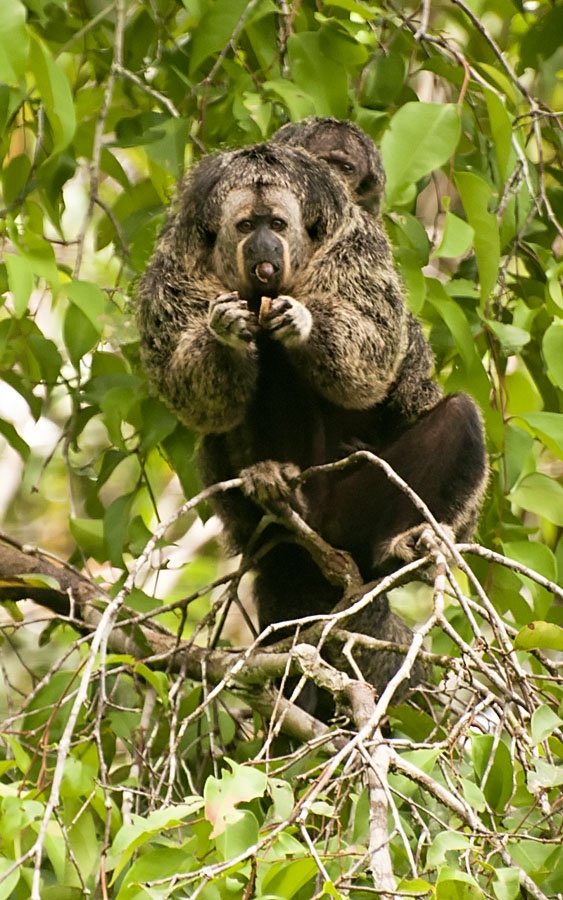We are investigating a possibly undescribed species of saki monkey that lives in flooded forests along the Tahuayo River. All our guests who visit the Research Center are invited to participate in this research by sharing any photos you are able to take of the saki monkeys.
Our biologist Malika Gottstein works full time on the project observing saki groups in the trail grid and along the rivers around the Tahuayo River Amazon Research Center. Sakis are among the least studied monkey genera worldwide and the exact species classification, as well as ecology and behavior are not yet known. Our research projects seek to resolve the taxonomical uncertainty of saki monkeys in the Northern Peruvian Amazon by conducting genetic and morphological analysis of the saki population. We are first to investigate feeding ecology of the Monk Saki, as well as movement patterns and social grouping.
We are putting together a photographic atlas of the sakis to document the facial patterns of these monkeys as this will help us to figure out if we have a species that hasn’t been reported in this area before. Photos would also help us to document how many individuals are in each group, the identity of these individuals and any demographic changes in the groups (such as the birth of babies, departure of maturing offspring, or changes in male or female membership).
Would you like to help?
If you have an opportunity to photograph these monkeys we would really like to know the following:
- When did you take the photo? (The date: month, day, year)
- Where did you take the photo? If you are on the trail grid, the coordinates of the nearest grid node are fine (for example, D19, or between B5 and B6). If you have a GPS unit with you and can get a reading that is also great. If you see the sakis while you are on the river again a GPS reading is ideal. It is often easier to get a good reading on the river than in the forest. No GPS? Ask your guide for helpful landmarks.
- How many sakis did you encounter? Your guide will be really helpful here as well. Guides often see monkeys that we miss.
- Extra Credit Points: Was there anything that struck you or your guide as interesting or unusual about this encounter? For example, were the sakis hanging out with another species of monkey or maybe having a fight with another group of sakis?
- Do we have permission to use your photos? By taking part in this project and supplying us with the photo we assume you are willing to allow us to use the photo in our research. Are you also willing for us to publish your photo in a scientific paper? If you give us permission to publish the photo we will always credit you as the photographer. Thank you for being willing to participate in this project. Your photos will be enormously helpful to us in figuring out which species of sakis are in this area and following the demographic changes in our study group when we can’t be there ourselves.

